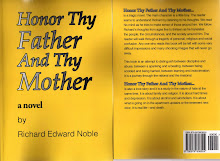The Great Strikes of 1877
By Richard E. Noble
In June of 1877, in Camden Junction, just outside of Baltimore, an eruption took place that nearly precipitated a third American Revolution. The powers that be had announced to the workers of the Baltimore and Ohio Railroads that there would be yet another pay cut. This would be the forth pay cut in three years. Their wages had already been cut over the last three years by 35%. The owners and bosses would still be getting their huge salaries, bonuses and incentives, and the shareholders would still be getting their substantial dividends, despite the perils of excessive, uncontrolled competition. But the workers wages would have to be cut once again.
The workers didn’t know the finances of the railroad. All that they knew was that they were already starving. There had been a continuous line of depressions and panics in the past; 1819 ... 1837... 1857... 1873 and now, once again in 1877. These always seemed to be appropriate and convenient times to break any labor unions by cutting wages and laying-off employees. Excessive immigration made employees more than plentiful. The law of the land strongly supported management. The railroads were the most powerful businesses in the nation. Private property was considered sacred. Workers were still considered by owners and bosses much as they were in early Colonial times. They were uneducated, dirty, lazy miscreants; many of whom had been convicts in their homelands. Worker organizations that joined together to raise wages or improve working conditions were considered to be “conspirators” in restraint of trade. It was not too long ago that they could be hung for such activities. The attitude of government and management was much the same in 1877. What could the workers do? They had no power. They had no status. They had no rights. They had no food. They had nothing.
Nevertheless, they stopped working and walked off their jobs. They clustered around the train yard and stopped the trains from running. The workers in Martinsburg, West Virginia heard about what had happened at Camden Junction and they did the same. The Captain at the B&O called the Governor and said that he needed the Militia to go down there and protect his property. The Militia arrived, listened to the complaints of the workers and immediately joined the side of the strikers. The president of the B&O went to President “Rutherfraud” B. Hayes and demanded that he send in the federal troops. “Rutherfraud” obeyed, and sent in a small contingent of about 250 soldiers. In the mean time, word of the strike had spread among railroad workers like wild fire. The strike had now spread to Philadelphia, Columbus Ohio, Chicago, Cincinnati and St. Louis.
The “Dandy Fifth,” a bunch of little rich boys serving in the Maryland National Guard, was sent out to teach the working scum a lesson. Shortly thereafter the Maryland sixth was called out also. The Guardsmen were pelted with stones and verbal assaults. The Sixth opened fire. They gunned down several strikers and wounded and injured a good many more. Reporters covering the scene were shocked by the number of old men, woman, and children participating in the strikes. “Rutherfraud” saw this situation as a possible revolution. He brought his cabinet together in a virtually permanent session.
In Pittsburgh, the railroad owners had instituted pretty much the same policies. Most recently, they proclaimed a 10% wage cut and “double headers” for the workers. Double Headers meant twice the work for the same pay. Thirty four freight cars would be placed behind a single engine instead of the usual seventeen. The workers in Pittsburgh followed suit with the Baltimore workmen. They shut down the train yard while the crowd screamed, “We want bread”.
This chanting for bread was not figurative. In a speech before a congregation of workers at Plymouth Church in Brooklyn, the Rev. Henry Ward Beecher, father of Harriet Beecher Stowe of “Uncle Tom” fame, gave a speech admonishing the poor workers. In the style of the Rev. Malthus who suggested in England that the poor of the world should stop having sex and producing unnecessary children as a solution to their problems, the Rev. Beecher admonished the workers for their unwholesome lifestyle. He scolded them on their drinking and gambling and instructed that a diet of good, wholesome bread and water, three times a day was good enough for any laboring man and his family. One dollar a day wage, spent in the manner described, should be adequate for any man and wife and their five children.
Another “moral” argument of the day was whether or not an employer had an obligation to pay a wage suitable to feeding a man’s entire family. After all, the employer had only hired one individual. If others of this individual’s family needed bread also, should they not find employment themselves? Needless to say, woman and children were employed in all capacities in the labor force of the day. And, of course, because they were not as strong and “efficient” as the men, they were paid considerably less. Naturally, when layoffs became necessary, the high priced men were the first to go. This was all simply a matter of “common sense”. The Country had come a long way in their idea of “common sense” since the days of Tom Paine.
Instead of relief and discussion at Pittsburgh, the disgruntled workers faced Gatling guns. Two Gatling guns and 3,400 rounds of ammunition were ordered to Pittsburgh. By July 21, the guardsmen and Militia in the city amounted to several thousands. The hostilities increased and then a slaughter ensued. When the Pittsburgh Militia saw all of their friends and neighbors, old men, woman, and children, laying in the streets, dead and wounded, they threw down their arms and joined the strikers. The mob then picked up the arms, and raided local businesses for more. It is estimated that they ended up with in excess of 2,000 weapons. The strikers charged the troops and remaining loyal Militia and backed them into the roundhouse. While the soldiers were held at bay, the rebels proceeded to wreak and set the Pennsylvania Railroad ablaze. They even found an artillery piece and fired it at the roundhouse. When all was said and done; 125 locomotives were burned, 3,500 cars with their cargo of coal were destroyed, the grain elevator was gone, the Union Depot was gone ... the Pittsburgh and St. Louis freight depot covering half a dozen blocks and hundreds of small buildings were all gone.
On July 30, a trainload of soldiers arrived at Johnstown. In Reading Pennsylvania, Brigadier General Frank Reeder, with the Easton Grays, a unit of the favored and better off, opened fire on a crowd. They killed bunches of strikers and innocent observers. They even wounded five local policemen. In Newark New Jersey the police department joined the strikers along with several of the Guard companies. A Mister Tom Scott, head of the Pennsylvania Railroad, urged that the strikers be given ... A rifle diet for a few days and see how they like that kind of bread ... The newspapers proclaimed that this was all a “Communist” plot.
On July 24, “Rutherfraud” and his cabinet decided that this was an “insurrection”. The Federal Army was sent in under the leadership of Gen. Winfield Scott Hancock. By the time the General had arrived, the strikers and citizens themselves had organized and quelled most of the violence and gotten things under control.
The property damage exceeded 10 million and hundreds were killed and many, many more injured and wounded. The Revolution had been dissipated momentarily, but it was not over.
* ‘‘
Works used in this essay: A History of American Labor , Joseph
G. Rayback; “Labor Problems in American History”, Carroll R. Daugherty; “The Rise of Industriaal America”, Page Smith; “American Economic History” Harold Underwood Faulkner.
Subscribe to:
Post Comments (Atom)







































No comments:
Post a Comment